#Grande Armée
Explore tagged Tumblr posts
Text
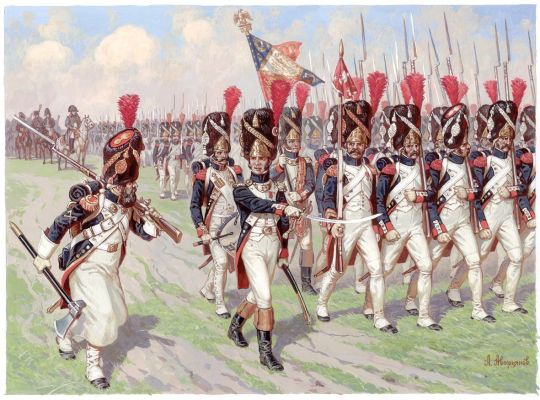
#napoleonic wars#grenadiers#old guard#grenadiers à pied#imperial guard#the immortals#grande armée#french empire#france#french#first french empire#history#napoleon bonaparte#napoléon bonaparte#grenadier#art#europe#european#soldiers#napoleonic#emperor#napoleon#napoléon#empire#bonaparte#axe#sapper#flag#banner#eagle
235 notes
·
View notes
Text

Austerlitz reenactment, 2015.
wikimedia commons
15 notes
·
View notes
Text

#croquis#dessin#noir et blanc#bande dessinée#sketch#drawing#comics#black and white#artists on tumblr#dix neuvième siècle#nineteenth century#fantassin#infantry#infanterie#footman#grande armée#guerres napoléoniennes#napoleonic wars
48 notes
·
View notes
Text
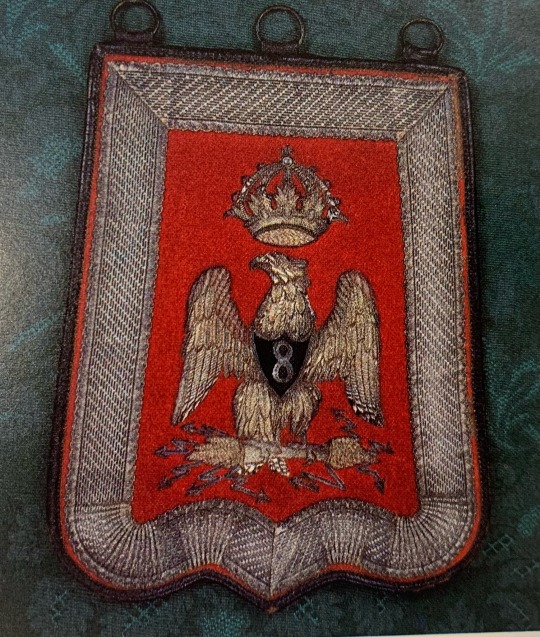



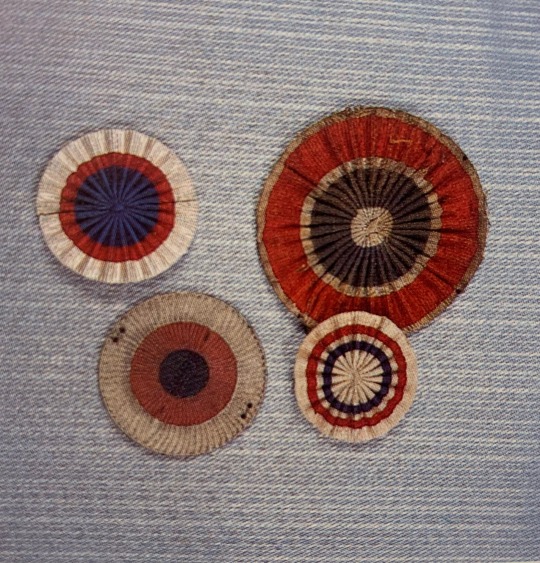
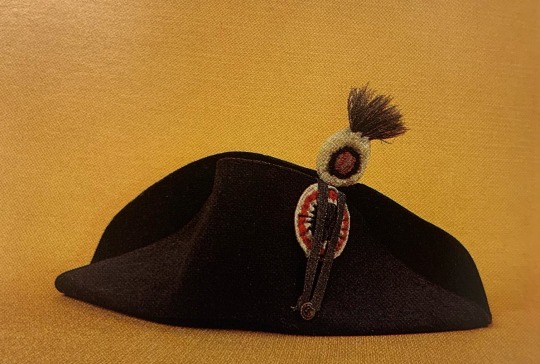

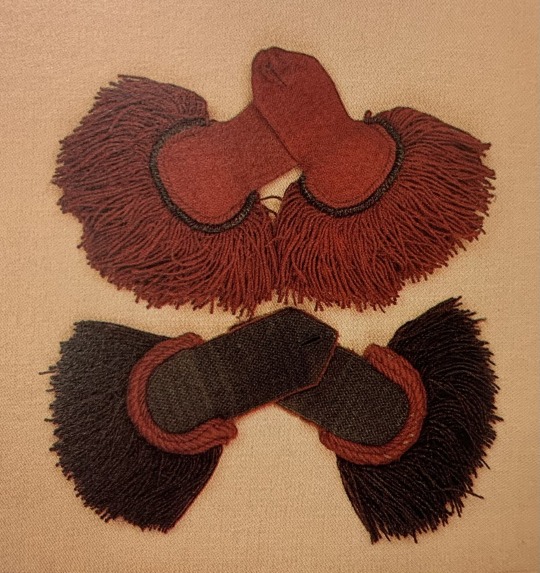
Pretty garments from French Napoleonic military uniforms
There was quite a lot of variety in the uniforms. Here is an account from a memoir of a soldier in Napoleon’s grande armée:
“I had been in the company for five months when, one Sunday, my chief squadron sergeant major, passing in review the preparations for inspection, stopped in front of me and, after looking me over from head to foot, said: ‘Parquin, you may have a handsome uniform, but you are not a soldier! Your gaze should be assured, look me squarely in the whites of the eyes; make me tremble if you can! You are in the army now!’”
Source: The Age of Napoleon, The Metropolitan Museum of Art
#military uniforms#pics#book pics#napoleonic era#napoleonic#The Age of Napoleon#napoleon#first french empire#19th century#french empire#napoleon bonaparte#france#history#fashion#fashion history#cavalry#grande armée#frev#french revolution#uniforms#soldiers#memoir#met#the met#epaulettes#cockades#bicorne#cockade#epaulette#bicornes
202 notes
·
View notes
Text

'Monsieur Verlinde of the 2nd Lancers - one of the surviving Grande Armée veterans in uniform on the anniversary of Napoleon's death, Paris, 1858
#napoleonic wars#photograph#early photography#meanwhile in france#napoleon#grande armée#lancers#cavalry
23 notes
·
View notes
Text

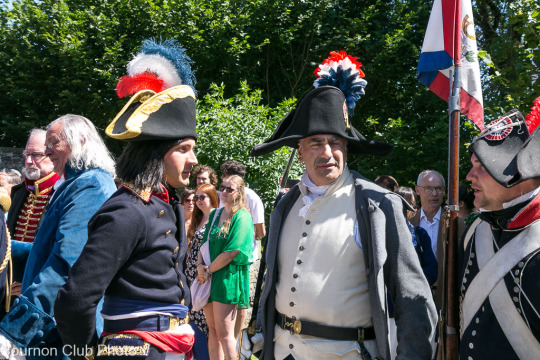

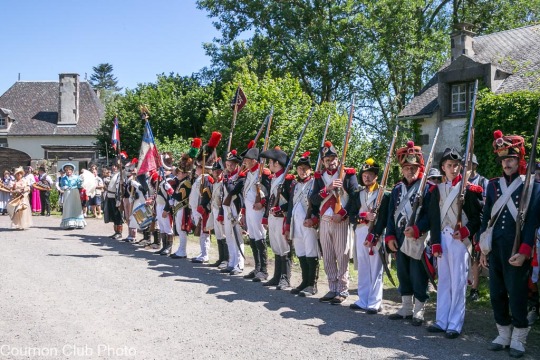
Le général Bonaparte inspectant les troupes au Manoir de Veygoux (France)
General Bonaparte inspecting the troops at the Manoir de Veygoux (France)
Crédit photo : Cournon Club Photo Avec Alessandro Menabo (général Bonaparte), Livio, Pied Rouge, l'association Napoleonica d'Italia. Partenaire : France Bonapartiste
#france#bonaparte#napoleon#napoleon bonaparte#soldats#cosplay#reconstitueurs#Italie#Grognard#Grognards#Veygoux#Infanterie#Grenadiers#Général Bonaparte#Grande Armée#Cosplayers
13 notes
·
View notes
Text

Drew an Ancestor for my trollsona. He's called the Adjudant and yes, he's French-inspired. The first one who says "Bri'ish" goes to the fucking guillotine.
#homestuck#homestuck troll#homestuck fantroll#fancestor#troll#indigo#indigo blood#homestuck ancestor#french#français#grande armée
23 notes
·
View notes
Text
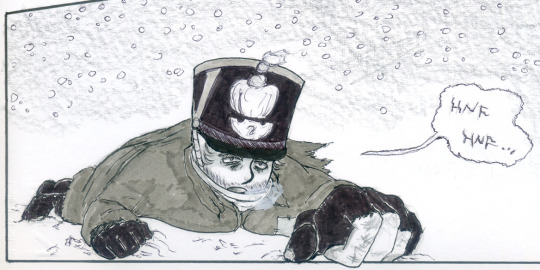
Somewhere between the Beresina and Vilnius, December 1812...
Panel from comics class, first story assignment. Full of mistakes but I'm still fond of it.
2 notes
·
View notes
Text

The Fire of Moscow, 1812 by Albrecht Adam
#albrecht adam#art#fire#moscow#russia#napoleonic wars#french#france#russian#landscape#history#napoleonic#europe#european#first french empire#french empire#city#soldiers#grande armée#russian campaign
81 notes
·
View notes
Text
La Grande Armée

View On WordPress
0 notes
Text
Tumblr Biography: Napoleon 🇫🇷
🎖️ Promoted to Brigadier General 👨✈️ at just 24, Napoleon was put in charge of the artillery of 🇫🇷 France's Army of 🇮🇹 Italy. But could he lead them to 🏆 victory against overwhelming odds❓
#brigadier general#leadership#ranking#general#experience#experienced#decorated#tactical#commission#authority#responsibility#veterans#brass#uniform#salute#military service#public servant#career advancement#french army#french aristocracy#grande armée#french empire#napoleons marshals#conquest#soldiers#cavalry#infantry#artillery#conscription#tactics
0 notes
Text
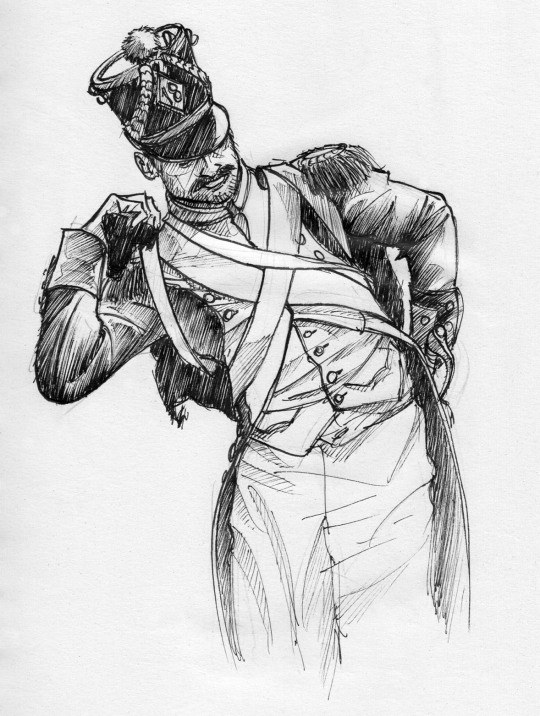
#croquis#dessin#noir et blanc#bande dessinée#sketch#drawing#black and white#comics#artists on tumblr#dix neuvième siècle#nineteenth century#soldat#grande armée#napoleonic wars#guerres napoléoniennes#fantassin#infantry
24 notes
·
View notes
Text

The Reading of the Bulletin of the Grande Armée, 1807, Louis-Léopold Boilly
Saint Louis Art Museum
#me and who#this is what napoleonic tumblr looks like#Louis-Léopold Boilly#Boilly#art history#19th century art#napoleonic era#napoleonic#first french empire#french empire#grande armée#paintings#art#French art#France#history#source: Wikipedia commons
39 notes
·
View notes
Text
1er mars 1815 : Napoléon débarque à Golfe-Juan, c'est le début des Cent-Jours
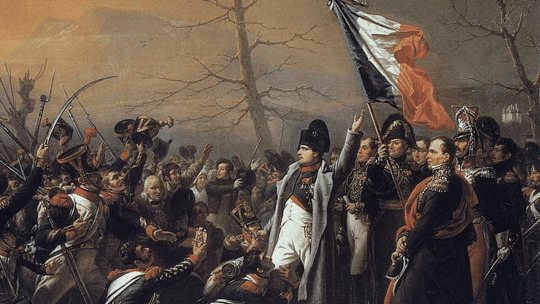
Le 1er mars 1815, un événement historique majeur se produit lorsque Napoléon Bonaparte débarque à Golfe-Juan, marquant ainsi le début d’une période connue sous le nom des Cent-Jours. Ce jour-là, une petite flottille apparait au large des côtes françaises, mettant fin à la période d’exil de Napoléon sur l’île d’Elbe. Parti de l’île d’Elbe le 26 février, Napoléon est à bord de l’Inconstant, accompagné de six autres navires. Avec lui se trouvent ses proches et environ mille soldats de sa garde.
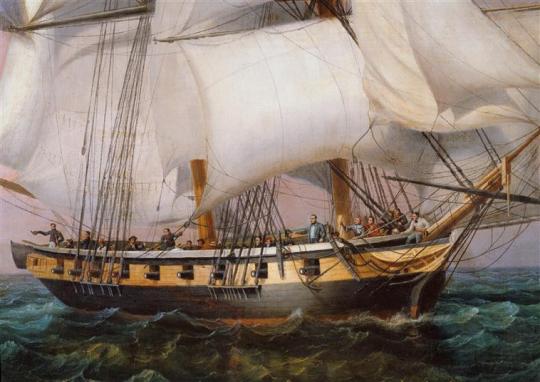
Aux côtés de l’Empereur se trouvaient les hommes qui formaient en quelque sorte son gouvernement sur l’île d’Elbe : le général Bertrand, chargé des affaires intérieures et l’un de ses plus proches conseillers, le général Drouot, assumant le rôle de ministre de la Guerre, et Peyrusse, trésorier de la Couronne. Se trouvaient également le général Cambronne, le Dr Fourreau de Beauregard mais aussi Pons de l’Hérault, ainsi que son personnel, incluant Marchand, son premier valet de chambre, et Saint-Denis, surnommé “le mamelouk Ali”.
Pendant la traversée, Napoléon s’était retiré dans sa cabine, plongeant dans l’élaboration des proclamations qui marqueraient son retour. Ces missives, soigneusement préparées à l’avance, étaient destinées à être distribuées dès son arrivée, toutes deux datées du 1er mars, jour symbolique de son débarquement et du renouveau.
Dans son discours adressé au peuple français, il justifiait son retour en expliquant les circonstances de son départ en 1814, attribuant son échec à la trahison des maréchaux Augereau et Marmont.
Aux soldats, il dévoile les voies de la gloire et prononce les paroles qui deviendront emblématiques :
“La victoire avancera au pas de charge. L’Aigle, arborant fièrement les couleurs nationales, planera de clocher en clocher jusqu’aux tours de Notre-Dame.”
Après trois jours de navigation, la flottille arrive enfin au mouillage dans l’anse du golfe Juan. Napoléon, arborant fièrement le drapeau tricolore français, décide de procéder au débarquement. Une escouade de grenadiers est envoyée en reconnaissance pour s’assurer que les côtes sont sûres. La côte est en effet sans défense, aucune batterie côtière n’étant présente à cet endroit, démontrant ainsi que les autorités n’ont à aucun moment envisagé que Napoléon tenterait un débarquement dans le sud de la France.

Le lendemain matin, Napoléon consulte une carte pour planifier la suite de son itinéraire vers Grenoble. Il décide de suivre la route des Alpes plutôt que de traverser la vallée du Rhône, où il a été conspué l’année précédente en se rendant à l’île d’Elbe. La troupe se remet en marche, avec Napoléon montant à cheval et ses hommes à pied.
Au cours de la journée, des contacts sont établis avec les autorités locales et la population. Certains habitants manifestent leur soutien à Napoléon en illuminant leurs maisons et en criant “Vive l’Empereur”, tandis que d’autres observent son passage avec une certaine indifférence.
Après avoir stationné quelques heures à Cannes, Napoléon repart à l’aube en direction de Grasse. Ainsi se clôt, sur le littoral français, la première étape de ce que l’on appellera plus tard le “vol de l’Aigle”, un périple qui devait mener l’Empereur jusqu’à Paris en vingt jours.
***
On March 1st, 1815, a major historical event occurred when Napoleon Bonaparte landed at Golfe-Juan, marking the beginning of a period known as the Hundred Days. That day, a small flotilla appeared off the French coast, ending Napoleon's exile on the island of Elba. Departing from Elba on February 26th, Napoleon was aboard the Inconstant, accompanied by six other ships, along with his close associates and about a thousand soldiers from his guard.
Alongside the Emperor were the men who formed his government on the island of Elba: General Bertrand, in charge of internal affairs and one of his closest advisors; General Drouot, serving as Minister of War; and Peyrusse, the Crown Treasurer. Also present were General Cambronne, Dr. Fourreau de Beauregard, as well as Pons de l'Hérault, along with his staff, including Marchand, his head valet, and Saint-Denis, nicknamed "the Mameluke Ali."
During the crossing, Napoleon retreated to his cabin, immersed in drafting proclamations that would mark his return. These carefully prepared messages were intended to be distributed upon his arrival, both dated March 1st, the symbolic day of his landing and renewal.
In his address to the French people, he justified his return by explaining the circumstances of his departure in 1814, attributing his failure to the betrayal of marshals Augereau and Marmont. To the soldiers, he unveiled the paths to glory and uttered words that would become iconic: "Victory will advance at a quick pace. The Eagle, proudly displaying the national colors, will soar from steeple to steeple to the towers of Notre-Dame."
After three days of sailing, the flotilla finally anchored in the bay of Golfe-Juan. Napoleon, proudly displaying the French tricolor flag, decided to proceed with the landing. A squad of grenadiers was sent out for reconnaissance to ensure the coast was secure. Indeed, the coast was undefended, with no coastal battery present, demonstrating that the authorities had never considered Napoleon attempting a landing in southern France.
The next morning, Napoleon consulted a map to plan the rest of his route to Grenoble. He chose to follow the Alpine route rather than crossing the Rhône Valley, where he had been reviled the previous year on his way to Elba. The troop resumed their march, with Napoleon riding on horseback and his men on foot.
Throughout the day, contacts were made with local authorities and the population. Some residents showed their support for Napoleon by lighting up their homes and shouting "Long live the Emperor," while others watched his passage with indifference.
After spending a few hours in Cannes, Napoleon set off again at dawn towards Grasse. Thus ended, on the French coast, the first stage of what would later be called the "Flight of the Eagle," a journey that would lead the Emperor to Paris in twenty days.
#france#napoleon#bonaparte#napoleon bonaparte#soldats#grande armée#Golfe-juan#débarquement#Cent-Jours#Vol de l'Aigle#Empereur#Empire
7 notes
·
View notes
Text

Avenue de la Grande Armée, Paris - Walter Gramatté , 1922.
German, 1897 - 1929
Oil on canvas, 50 x 36 cm. 19.6 x 14.1 in.
69 notes
·
View notes
Text


Avenue de la Grande-Armée à la Porte Maillot, pendant la commune de Paris (1871), et aujourd'hui. - source Dominique Messager via Hier et Aujourd'hui.
24 notes
·
View notes